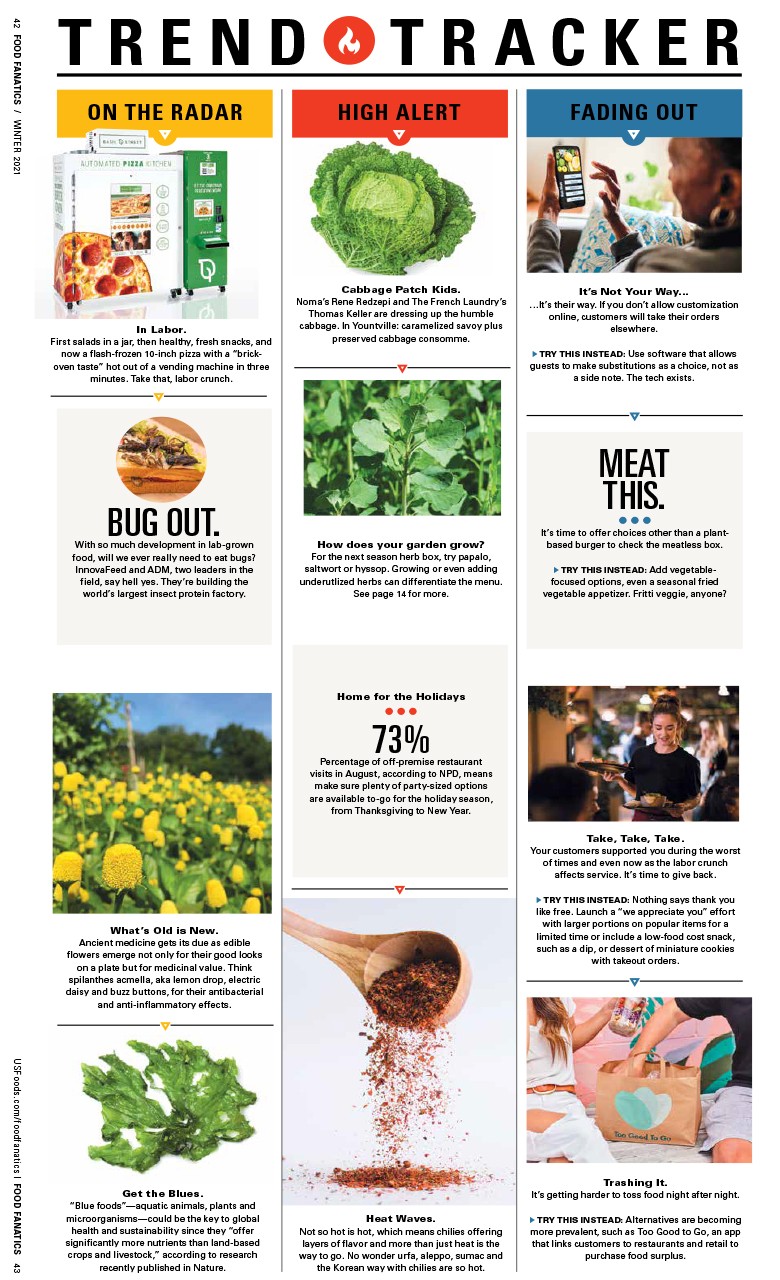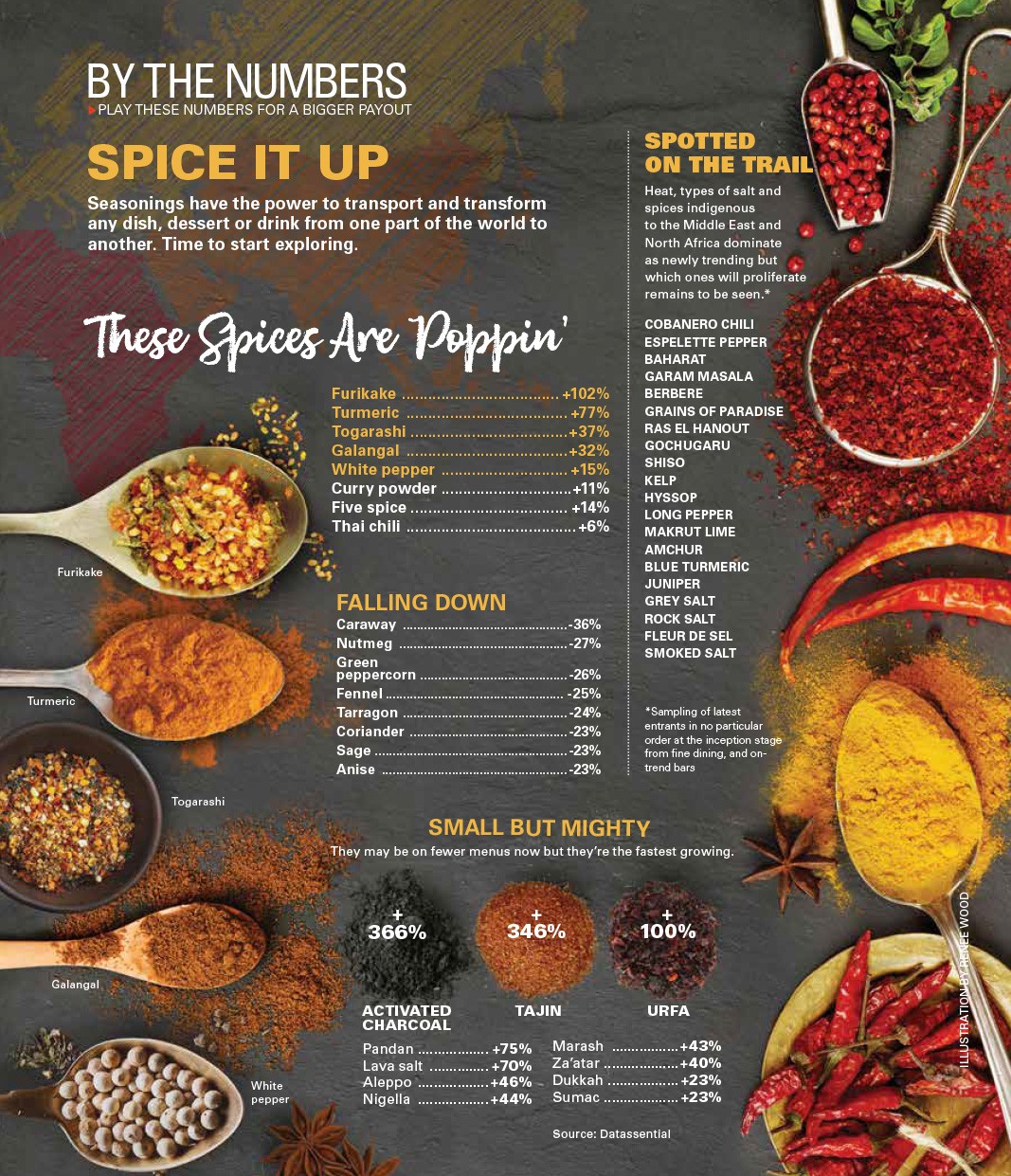Mind the Gap
Revised models emerge to ease wage disparities
❱ If gratuity-free policies have proved anything, it’s that upending a long-entrenched practice is no easy task, especially when it comes to closing the wage gap between front - and back of the house staff.
Despite some movement – including new restrictions on pooling tips and higher minimum-wage requirements in some states – regional wage reports show that significant wage disparities still exist between FOH and BOH in many states. In Seattle, for example, servers in fine dining restaurants earned more than $17 per hour, while kitchen staff earned $11 per hour.
Most industry leaders agree that the problem needs to be addressed, but a consensus over the model doesn’t exist. Much can be gleaned, however, from operators who are experimenting.
MODEL 1
Small Hospitality Fees
In 2016, Lombardi’s Italian Restaurant in Everett and Bothell, Washington, began tacking on a 5% service fee, a number management felt could boost BOH wages without alienating diners.
“Our front of the house staff were making more than double what the back-of-house made,” recalls Diane Symms, Lombardi’s founder and president, who previously allowed servers to “tip out” BOH staff before a state restriction outlawed it.
Despite some early concerns by diners and staff, it’s helped address the problem. Servers keep their tips and BOH staff receive between 1 and 3.5% (depending on the job) of the service fee. A half-percent is allocated to a “retention pool” that’s divided among BOH staff as an annual bonus.
In 2017, Rebecca Kean, co-owner and operations manager of Brassica Kitchen and Cafe in Boston, took a similar approach, adding an additional 3% service fee that is paid directly to the kitchen staff. “Our servers have been trained to tell (diners) they can leave 3% less for a tip, but it rarely happens.”
At Lombardi’s, Symms says a few of her servers quit over concerns the service fee would negatively impact their tips, but those who remained are earning just as much as before, while turnover in the kitchen is down an estimated 30%. The best part, says Symms, is an improved working relationship between the front- and back of the house.
Model 2
Sizable Service Charges
Instead of adding a small service fee, Chad Mackay, CEO of Fire and Vine Hospitality, implemented a 20% service charge in 2016 to cover wages and health benefits, making tips optional at his Seattle restaurants, including El Gaucho. The fee offsets two profit pressures that most big cities are now experiencing: minimum wage hikes ($15 an hour in Seattle) and the lack of a tip credit (which allows restaurants to pay below minimum wage).
Only there’s a twist: front- of house staff at El Gaucho can earn a commission – as much as 13% – on their sales, which is paid through a revenue share (with funds generated from the service charge) as well as optional additional gratuities. Mackay says it provides an “additional incentive to go above and beyond with service.”
Mackay lists the policy on his website and menu, and also convened senior servers to explain the idea when it launched. “We said, ‘Here’s what you are making and here’s what we think you’ll be making under the new model, and if it doesn’t work out like we think, we’ll fix it,’” he recalls. “We wanted their buy-in.”
Finding the right percentage can be tricky. Restaurants such as 71 Above in Los Angeles and Corona’s Mexican Grill in Broomfield, Colorado, charge service fees ranging from 10 to 18%, but it may be worth it. Mackay estimates servers can earn up to $75 per hour with minimum wage plus commission, while wages for back of the house staff have gone up as much as 50%.
Model 3
Price Hikes
At Mamaleh’s Delicatessen in Cambridge, Massachusetts, Co-Owner Rachel Miller Munzer has raised prices 5%, allocating the additional revenue to the kitchen staff.
Miller Munzer believed the revenue share, which they also implemented at their other restaurants, State Park and Café Du Pays, would increase wages for BOH staff by $2 per hour. Instead it led to $3 per hour increases, which Miller Munzer admits were great for staff but made it hard for the fledgling restaurant to make ends meet.
“We’re trying to figure out how to be a responsible business and pay people a living wage” she says, “but not at the expense of the business not surviving.”
In 2018, Mamaleh’s reduced its revenue share to 3.5% (Café Du Pays dropped its revenue share from 4% to 2.5%, and State Park stayed at 5%). The additional fees are added to bi-weekly paychecks of BOH staff; FOH staff still earns tips.
Although some restaurants, including San Francisco’s Trou Normand and Aster® and all 18 Joe’s Crab Shack locations, experimented with the model and nixed it, Miller Munzer and her partners are holding strong. They haven’t experienced much push back at Mamaleh’s, which she credits to her left-leaning Massachusetts clientele, noting, “This is a very community-driven area where people want to contribute to a better world through pastrami sandwiches.”
Making it work
Each of the options to close the wage gap between front and back of house staff has its own pros and cons.
Model |
ADVANTAGES | DRAWBACKS |
|---|---|---|
| Eliminating tipping | Provides FOH and BOH staff with similar salaries | FOH staff lose incentive to provide outstanding customer service |
| Service charges | BOH staff are guaranteed a portion of each guest check Educates guests about wage disparities Revenue can be allocated to specific needs such as healthcare |
Risk of angering guests who feel nickel and dimed over additional fees May lead to reduced tips for FOH staff if diners tip less to offset the service charge |
| Raising prices | Provides additional revenue to raise wages for BOH staff | Might turn away guests choosing restaurants based on price The revenue from higher prices rarely trickles down to front line staff |



